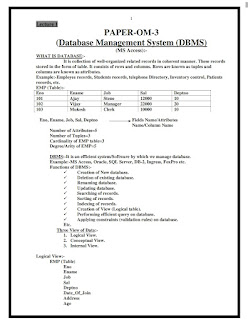
The term “visibility” is used to portray the extent to which a company’s management or analysts can estimate future performance. Visibility can range from low to high or from the near term to the long-term.
When executives or equity analysts talk about visibility, they are referring to sales or earnings. Management may comment on visibility in press releases, during earnings conference calls, or at investment bank-sponsored meetings or conferences. Analysts can discuss visibility in their research reports with clients to help them make investment decisions for their portfolios.
KEY TAKEAWAYS
- The term visibility describes the extent to which a company’s management or analysts can estimate future performance.
- Visibility ranges from high to low or from the near-term to the long-term.
- When there is high visibility, there is confidence in the projections, while low visibility tends to mean that confidence is low.
- Visibility can be affected by the state of the economy such that there is high visibility during a strong economy and low visibility when times are tough.
- Visibility can help investors determine the best investment decisions for their portfolios.
Understanding Visibility
Visibility occurs when a company’s executive team or market analysts make predictions about its future earnings or sales figures. Having visibility is one indicator that the processes put into place by the management team are followed by the rest of the team.
Companies are optimized for better performance if management has high and full visibility in the organization. High visibility generally means they are confident in their projections. Low visibility, on the other hand, means the opposite; that their confidence is low. Low visibility primarily happens when there is a shift in the economic cycle or changes in the market.
Executives typically prefer not to discuss low visibility, as this may make investors feel uneasy. But it’s not entirely avoidable, so it may be necessary that management set reasonable expectations in the market for the company’s stock. Management that boasts high visibility, on the other hand, should offer caveats to its optimistic outlook in case expectations for growth are not realized in the future.
Visibility is categorized as high and low. High for high confidence in predictions and low for low confidence for future performance.
Expressing Visibility in Time
Aside from the low-to-high portrayal spectrum, visibility can be characterized by the length of time. For example, it can cover the short-term—as in a single quarter—or the long-term. It may even allude to a specific interval such as “from now to the end of the calendar year.”
A company with low short-term earnings visibility may be questioned why this is the case if a competitor has high short-term visibility. A company that states it has strong earnings visibility over the long term will be regarded in a favorable light by investors. An analysis of the reasons for this high visibility would be useful for investors to better understand a company’s business model.
The Economy’s Effect on Visibility
The amount of visibility for a company is largely dependent on the state of the economy. When an economy is stable and growing, a company may have high visibility to confidently project sales or earnings.
But when the economy is weak or at cross-currents, a company will not likely have much visibility. When times are uncertain, a business is more likely to refrain from providing sales or earnings guidance to analysts and investors.
When visibility is low but the business’s operations are otherwise sound, this does not necessarily present the company in a negative light as its core operations are still a good investment. If it has the ability to ride out the economic downturn, then it could still be a positive investment due to its strong fundamentals.
In some instances, a company may be able to see a clear path for the growth of its business, no matter the economic environment. This is particularly true if the organization is in the process of launching or ramping up deliveries of products for which there is solid demand.
Visibility vs. Transparency
Visibility should not be confused with transparency. Even though the two terms are often used interchangeably, they are very different. While the former is a projection of a company’s future performance, the latter describes how accessible information is by a company and its management team.
A company is transparent when it openly and freely provides financial information, such as reports, prices, and production practices to its shareholders, its employees, or the general public.
What Does Visibility Mean?
The term visibility describes the extent to which a company’s management or analysts can estimate future performance. Visibility is considered a key aspect of management and is a requirement for many businesses in order to make their business run better.
How Do Businesses Gain Visibility?
Businesses can gain visibility by paying extreme attention to all numerical data for their business. This can mean making sure that all receipts are kept, expenditures are logged, numbers are exact (not rounded or guessed at), and proper, timely bookkeeping practices are upheld.
Why Is Visibility Important in Business?
Visibility ensures that businesses have the greatest understanding of their financial situation. It allows the business to assess both its short-term and long-term financial status in a much more accurate way, thus resulting in more accurate projections and financial models.







